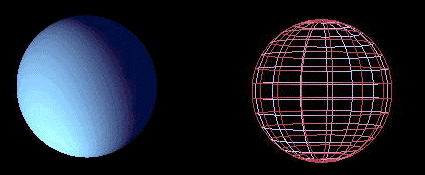
Spherical geometry replaces the standard flat plan with the plane being the surface of a sphere. Lines are defined as "great circles" of the sphere. A great circle is determined by taking the plane including any two points on the surface of the sphere and the center of the sphere and intersecting that plane with the surface of the sphere. If you visualize the plane as the globe, then lines of latitude are not great circles (except for the equator), and lines of longitude are. Elliptical Geometry takes the spherical plan and removes one of two points directly opposite each other. The end result is that in spherical geometry, lines always intersect in exactly two points, whereas in elliptical geometry, lines always intersect in one point.
In Spherical Geometry, all lines intersect in 2 points. In elliptical geometry, lines intersect in 1 point. In addition, the angles of a triangle always add up to be greater than 180 degrees. In elliptical/spherical geometry, all of Euclid's postulates still do hold, with the exception of the fifth postulate. This type of geometry is especially useful in describing the Earth's surface.
There is some debate as to wether spherical and elliptical geometries are actually strictly non-Euclidean. The particular areas of contention concern wether, because lines on a sphere loop back over each other, they are actually infinte. However, the "end" is never actually reached, which makes some consider it infinite.